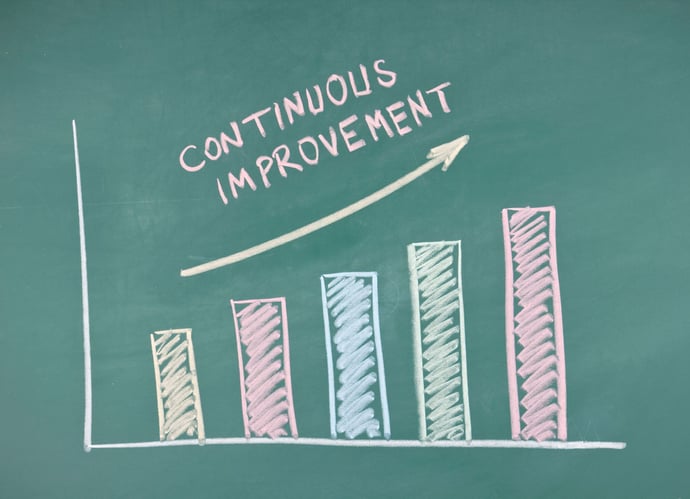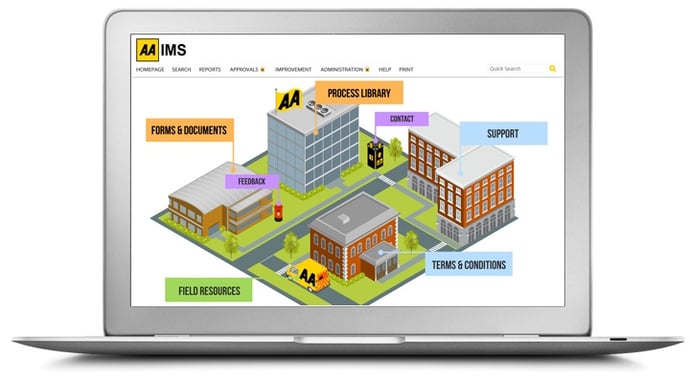Business Process Management (BPM) is an essential practice for a vast majority of companies; however it can mean different things to different people. In this article we’ll explore five of the key reasons your business needs business process management and the potential benefits you could gain, both in the short-term and throughout the longevity of the business.
1. Business Process Management improves efficiency
A common challenge for many organisations is that business processes are often inefficient, which results in an increase in waste, predominantly in time and money. It’s likely that there will be many processes in your organisation that are not working as seamlessly as they should be, and BPM is a great way to address this.
The first step is to identify what is currently done and then you can put steps in place to make changes. If your business processes are truly optimised for efficiency, you will be able to reduce costs, and save precious time and money.
To better understand what is necessary for getting the  , I recommend downloading the
, I recommend downloading the  which shows you how you can simulate change and implement continuous improvement in your organisation.
which shows you how you can simulate change and implement continuous improvement in your organisation.
To learn more about how you can stop wasting money in your business, read our article: How to stop wasting money in business: 10 actions to take

2. Business Process Management supports business knowledge transfer
Everyone has to retire at some stage and people do leave for all sorts of reasons. So how do you ensure that important business knowledge doesn’t follow your employees out of the door when they leave? BPM can be an excellent solution for this as it provides a clear method to capture and store important information. At Triaster, we believe the best way to do this, is to present this information in the form of process maps, and you can read more about this here: How to Transfer Business Knowledge from Key Employees Before they leave
Documenting information in this way allows you to easily share processes, policies and guidance documents among your workforce, which is the best way to make sure that business knowledge remains in your organisation.

3. Business Process Management provides a framework for Continuous Improvement
If you are interested in implementing a continuous improvement initiative in your organisation, then BPM provides an excellent framework for success. Continuous Improvement is a long-term approach to making small improvements gradually over time, as opposed to one big change that occurs all at once.
In this case, BPM will allow you to look closely at your business processes and make small, incremental improvements based on data-driven evidence. However, continuous improvement will only be successful if you have the full support and engagement of your employees. To learn how you can create a culture of continuous improvement in your organisation, read our article:
Continuous Improvement: How do I create a culture of Continuous Improvement?

4. Business Process Management supports the implementation of other IT systems
The implementation of a large IT system can create friction between the IT department and the rest of the business, especially if there is a lack of communication around the potential impact a new system may have on the rest of the organisation. BPM can support the implementation of systems such as Enterprise Resource Planning (ERP) as it allows you to have a complete overview of everything your business does and how it does it.
Before you begin to implement any system, you need to clearly understand what your business does and the impact that any change is likely to have on your organisation, department by department. Any new system needs to support the needs of the business rather than the other way around and by taking a BPM approach you can model the effects of your system before it is put in place. This means that you will be able to minimise or eliminate any risks before they occur, as well as communicate the impacts.
To find out how BPM and process mapping can support the implementation of an ERP system, read our article:
5. Business Process Management eliminates siloed working
Organisations can find that their core departments work very independently from each other and they do not understand or are not aware of what the other does. This can cause problems, especially when there are numerous processes that overlap several different departments.
Taking a BPM approach will help to eliminate siloed working as the processes will become visible to the whole organisation. This will help departments to see where they fit in the bigger picture and should encourage process analysis and improvement, although there must also be a cultural change to support this.
To learn more about how business process management can eliminate siloed working, read our article: How Business Process Management can break down the silos in your organisation
At Triaster, we believe the best way to really make the most of taking a BPM approach is to invest in a dedicated business process management system. We’ll take a look at some of the benefits next.

What are the benefits of using a dedicated Business Process Management system?
There are many benefits that come with using a dedicated BPM system, especially once you have a clear idea of what processes exist in your business and how they are performed. As mentioned above, once you have a clear overview of all your business processes you can begin to analyse them to discover the areas that need improvement and set a plan in motion to start making the changes based on data-driven evidence.
Some other benefits include:
- Creates a ‘one-stop-shop’ for a business’ processes, procedures and documents
- Identifies bottlenecks so that process improvements can be made
- Gives insight to achieving significant cost reductions based on continuous improvement of processes
- Makes sure that all employees in the organisation are carrying out the processes in the same way
Related articles:
How to stop wasting money in business: 10 actions to take
How to Transfer Business Knowledge from Key Employees Before they leave
Continuous Improvement: How do I create a culture of Continuous Improvement?
How Business Process Management can break down the silos in your organisation
Written by Isobel Witts
Isobel joined Triaster in September 2014 as our Customer Success Administrator. After about a year in the role she decided marketing was where her main interest lay and she began working with Emma as a new Triaster website was developed and the Triaster blog was started. The move was very successful, resulting in her moving full time into a marketing role, firstly at Triaster and subsequently for a local marketing agency.
